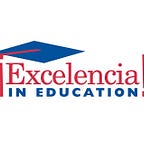How have Latino and Black students’ enrollment and retention been affected by the COVID-19 pandemic?
By Deborah Santiago and Emily Labandera
Latino and Black students’ enrollment and retention have decreased since the onset of the COVID-19 pandemic. From Spring through Fall 2020, both student groups saw disproportionate declines in enrollment and retention.
In the five years before the pandemic (Fall 2014 to Fall 2019), Latino students’ enrollment grew by 24%.¹ And in the year prior, Latino students were the only ethnic group making gains in enrollment (up 1.4% from Fall 2018 to Fall 2019).² During this same time, Black students’ enrollment had decreased by 4.6%. To regain the momentum from the young and fast-growing Latino population, colleges and universities committed to intentionally serve them are rethinking their retention efforts and intentionality in better serving their Latino and all students.
How has Latino and Black student enrollment been affected by the pandemic?
Undergraduate student enrollment declined nationally from Fall 2019 to Fall 2020, and Latino and Black students were disproportionately impacted. In this one year, Latino students’ enrollment decreased by 5.4% and Black students’ enrollment decreased by 7.5%.
Latino and Black students fit a post-traditional student profile (work while enrolled, enroll at community colleges, are first-generation, older, and may have dependents to take care of) and make college choices based on affordability, location, and accessibility. With the pandemic disproportionately affecting low-wage workers (which are generally people of color) loss of employment, taking care of dependents, and issues of affordability explain some of the sharp declines in Latino and Black student enrollment this past year.
How has Latino and Black students’ retention been affected by the pandemic?
Across all institutions in the country, the retention rates for Latino (62%) and Black (56%) students were lower than the national rate (66%) as well as their Asian (80%) and White (70%) peers (see Figure 1). First-year retention rates³ for enrolled students are indicators of students’ college pathways and success as well as institutional effort. These can also help institutions identify and understand patterns to improve their efforts to more intentionally serve their students. Yet, racial and ethnic disparities continue along Latino and Black students’ college pathways.
Across sectors, retention rates for Latino (53%) and Black (44%) students at public two-years (community colleges) were significantly lower than Latino and Black students’ retention rates at public four-year (73% and 68%) and private non-profit four-year (73% and 66%) institutions, respectively (see Figure 2).
How can federal, state, and institutional policy support Latino and Black students’ retention on their path to degree completion?
Federal, state, and institutional policy that support Latino and Black students on their path to a degree are critical to close equity gaps and end systemic inequities further exacerbated by the pandemic. Excelencia released our policy agenda in November 2020 at a pivotal moment giving the ongoing challenges of the pandemic and systemic inequities. Two key issue areas in our policy agenda center around retention and institutional capacity to support Latino student success. Federal, state, and institutional policies can focus on the following areas in retention and institutional capacity to support Latino and Black students on their way to complete a degree:
- Better capture Latino students’ pathways and how funding impacts Latino student success, by refining data tracking and sharing to support intentional strategies for retention.
- Ensure access to reliable internet connectivity for students and commit to long-term broadband infrastructure investments.
- Provide financial incentives, such as doubling the Pell Grant, to retain Latino students on their path to graduation.
- Prioritize and significantly increase financial support to institutions serving high numbers of students with financial need and count every student instead of using full-time equivalent enrollment.
- Provide guaranteed funding to all Hispanic-Serving Institutions who meet the eligibility requirements for Title V grants (high enrollment of Hispanics, low-core expenses, high enrollment of needy students).
- Refocus and limit the allowable activities for Title III and V grants to better align with Latino student success and in an online environment.
Institutions across the U.S. can look to the 14 Seal of Excelencia certified institutions for their evidence of effectiveness and intentionality in institutional practices serving Latino students, positive momentum for Latino student progress, and dedication to transforming the institution into an environment where Latino students thrive. Excelencia in Education established the Seal of Excelencia, a national certification for institutions that strive to go beyond enrollment to intentionally SERVE Latino students, by developing a framework integrating data, practice, and leadership into a comprehensive institutional strategy for intentionally SERVING students. Enhancing institutional capacity to better Latino students will in turn enhance institutional capacity to better serve all students.
[1] Source: Excelencia in Education analysis of U.S. Department of Education, National Center for Education Statistics (NCES), Integrated Postsecondary Education Data System (IPEDS), Fall 2014 and Fall 2019 Enrollment Survey.
[2] Source: Excelencia in Education summary of National Student Clearinghouse, Persistence and Retention Fall 2019 Beginning Cohort, July 2021. https://nscresearchcenter.org/wp-content/uploads/PersistenceRetention2021.pdf
[3] First-year retention rates: percentage of first-time first-year students that return to the same institution where they began the following Fall term for their second year.
